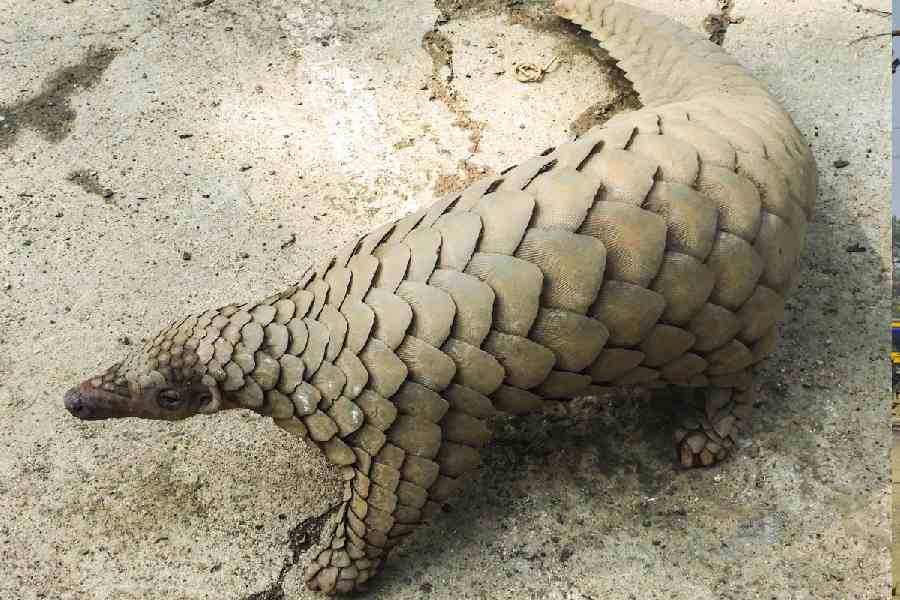
Picture Credit: ERNST HAAS/Getty Images

In a certain land at the confluence of cultural and political boundaries, tethered by impenetrable mountains, snow and thin air, and overseen by gods, kings and able ministers, thrives the collective consciousness of an entire people. And in that fantastic repository, through centuries and gradients of progression, lives on a fantastic creature.
Nikhil Joshi has been scaling the hills around Darjeeling ever since he could. At 12, he was at the topmost point of Bengal - the Singalila ridge (3,636 metres) on the Darjeeling-Nepal border. "I am a GTA-registered guide," says the 30-year-old proudly, referring to the Gorkhaland Territorial Administration. "I don't like to talk politics; I only want my people to know their history and culture," he says, and rattles off when and how the Gorkhas fought the British, the story of Yuksom being established as the first capital of the Sikkim kingdom, the history and politics of mapping and climbing this part of the Himalayas, and so on. "In 1899, Douglas Freshfield became the first mountaineer to circle the Kanchenjungha, which was till then considered to be the highest peak," and continues, in the same breath, "It was around that time that the first footprints of Yeti were sighted in Sikkim."
Yeti, or the Abominable Snowman, is a mythological creature said to inhabit the Himalayan regions of Nepal, Bhutan and Tibet.
"I believe in the Yeti; there is proof of its existence," says Joshi, who trained at the Himalayan Mountaineering Institute in Darjeeling.
Joshi's father is an orthodox Hindu from Ne-pal, and mother a Nepalese Buddhist. "We believe in mythology. I could take you to a shaman who has in his possession a big twisted bone - a Yeti bone," he says, gesturing with his hands to show how twisted it is. "In Tibetan culture, we blow through the shinbone to ward off evil spirits."
Non-believers and cynics may say otherwise, but Joshi is unwavering. "When I talk about our mythology, I am serious," he says. "I go looking for proof, and in that sense I am an anthropologist. People think I am crazy," he laughs.
But how did the shaman come to possess the big bone? According to Joshi, the man smuggled it out of the high-range area in exchange for Yarsagumba. He shows photographs of the strange-looking fungus that appears half plant-half-insect and is found in altitudes of over 4,500 metres. "Yarsagumba is in great demand in China, where it is used to make Viagra-like medicines. Yars-agumba is more precious than gold," he whispers. Yetis, he adds, are the guardians of the Himalayas; they guard these precious places from the evil reach of human beings.
Nawang Phuntsho spent his childhood in Wamling in Zhemgang district of central Bhutan. "There was a stupa on the periphery of our village... it was to keep Yetis from coming in," he tells The Telegraph over phone. Phuntsho works with an NGO called READ Bhutan, in Thimphu, and has also authored a book called The Cuckoo and the Pigeon: A Collection of Folktales from Rural Bhutan.
He broadly outlines the characteristics of the Yeti - which he pronounces as "Yiiti". Unless provoked, it's not a monster or a ghost or a harmful creature. Neither is it something to be worshipped. Called " migoe" in his language, it is known for its phenomenal strength and magical powers. It is also said to possess human-like sentiments and emotions, but likes to stay away from humans.
So till what age did Phuntsho - now 34 - believe in Yetis? "I believe in them still," he says, adding, "Just because we haven't seen them, doesn't mean they are not real."
Phuntsho talks about Kunzang Choden, a Bhutanese writer who was the first to compile a collection of narratives of encounters with the Yeti. "At a conference, Choden met a biologist who countered her saying there are no scientific facts to prove the Yeti's existence. Choden, however, told him calmly, 'If you go looking for a Yeti, you will not find one in even a hundred years. But if you don't, you might just see it.'"
Some Yetis, says Phuntsho, are kind creatures. In one of his stories, he writes about a drungtsho or local doctor who comes across a Yeti who carries him off to his cave high up in the snow. There, the creature reveals a wound on his leg - a splinter embedded in the flesh. The drungtsho then carefully pulls out the splinter, and the happy Yeti rewards him with jewels. In Herge's Tintin in Tibet too, the Yeti looks after Tintin's Chinese friend Chang - the sole survivor of an airplane crash - and is visibly sad when Chang goes away. "Herge must have done his homework," chuckles Joshi.
Experts attribute this Yeti following to some deep and inherent need of humans to believe in mysteries. Writer Phuntsho explains the phenomenon as a tool to keep them disciplined. Joshi's rationale is moored in evidence. He tells us about the time he heard the Yeti's whistle-like call. "It wasn't the wind. We were above the base camp of Dudhpokhari in Nepal, at an altitude of 4,560 metres. Most people in our group heard it," he says. And then, studying our expression, shakes his head and adds, "You have to believe in these things. If you don't there's nothing."











